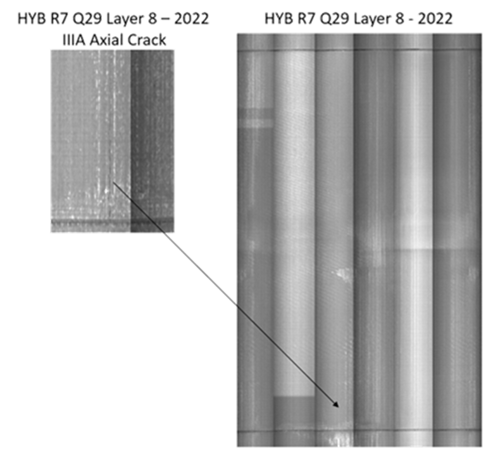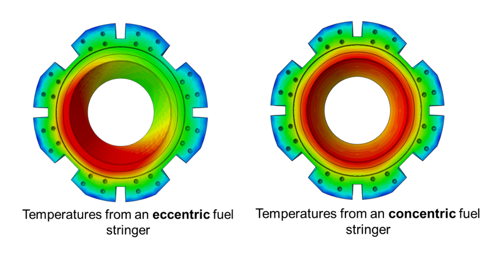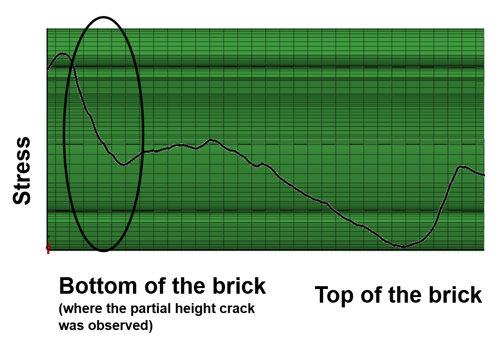Challenge
Production of low carbon electricity through operation of the Advanced Gas-cooled Reactors at Heysham 2 and Torness forms a critical part of the UK government’s strategy for achieving net zero and ensuring energy security.
These reactors are operating beyond the intended design life and are encountering ageing mechanisms which caused cracking and can affect the safe shut down of the reactors. EDF claims that the cracking mechanism is understood and predictable, and hence that operation is safe.
EDF routinely inspects its reactors’ graphite cores to confirm the assumptions within its models. There is uncertainty in the degradation and inspections can reveal unexpected behaviour. The objective is understanding whether these unexpected observations represent a challenge to the general understanding and hence safe operation.
One such inspection observation was a partial height axial crack in a Layer 8 brick (see Figure 1) which was outside the region where cracking was expected to occur. The presence of cracking outside the region of highest assumed stress challenged EDF’s understanding of graphite ageing and EDF’s ability to predict the condition of the reactors. EDF’s ability to predict the ageing of the reactors is of paramount importance to our confidence in allowing reactors to return to service.
EDF argued that this cracking was caused by a unique condition of fuel position and stress profile. It was therefore necessary for us to form a view on the adequacy of EDF’s position and whether to prevent return to service.
Research activity
Graphite experts from University of Manchester (UoM) are internationally recognised. They have provided independent expert advice to us on subjects including graphite material behaviour, graphite weight loss and analysis techniques since 2003.
The UoM team has developed a suite of analysis models which can quickly and effectively simulate the stresses within the graphite bricks in the reactor. This allows the UoM to respond efficiently to our requests for independent and informed views on a host of graphite behaviour aspects and their potential causes and extent.
We commissioned the UoM to investigate the observed cracking in Layer 8 and provide an independent view. This included running finite element models (Figure 2) to evaluate and test potential causes and infer the extent of cracking.
Outcome
The UoM work provided the following insights:
- The analysis models revealed how fuel position could amplify the temperature (Figure 2) and hence stresses within the given brick;
- There are natural fluctuations in neutron dose due to the position of individual fuel elements which affect the axial distribution of stress in a graphite fuel brick;
- The models also showed how the stresses in the brick (Figure 3) are effected by fuel position. The models indicated a small region of elevated stress in the vicinity of the partial crack observation which then reduces above the observation; and
- The work provided a rapid and independent response which supported EDF’s claim that the observation was supported by their current understanding.
ONR utilised the UoM work to assess whether EDF’s claim and the unexpected observation affected the extant safety cases.
The technical support from UoM’s experts was invaluable advice and enabled our specialist inspectors to understand the unique conditions in the reactor. This allowed us to take a proportionate position with respect to the unexpected observation and hence confidence that safe operation was justified.



Is this page useful?
Thank you for your feedback.
Thank you for your feedback. To help us improve our website we’d like to know more about your visit today. Please provide more details via our website feedback form.
Thank you for providing your feedback.